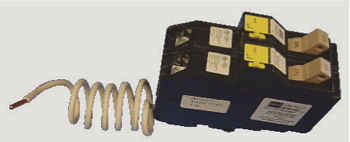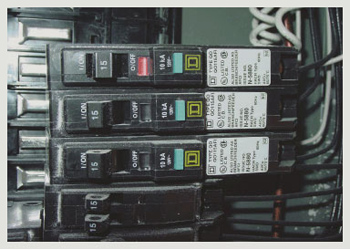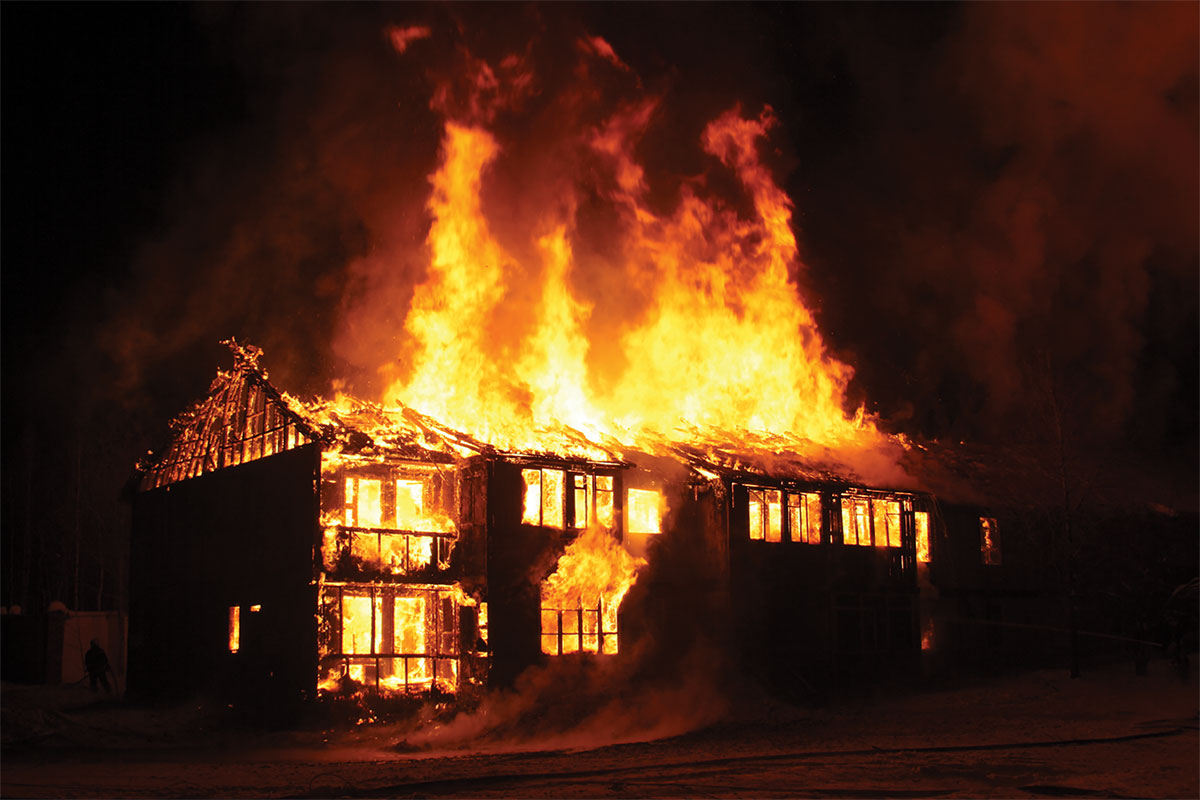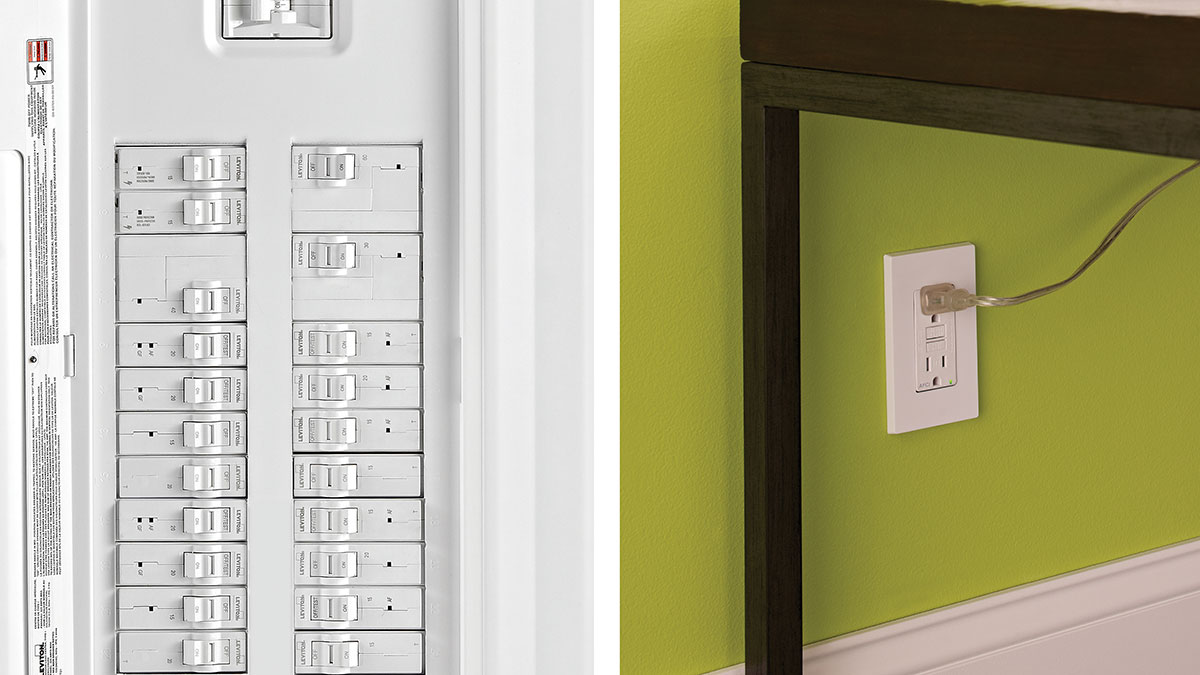Did you know that residential electrical fires, as reported by the National Fire Protection Association, causes an average of nearly 73,000 fires every year? These fires are responsible for 591 deaths, 1400 injuries and over $1 billion in property losses. Eighty-three percent of these electrical fires are caused by electrical arcing. Can something be done to resolve this electrical residential fire problem? This question is asked by the fire marshals and fire investigators every time bodies have to be removed or a home is destroyed. The answer to this question is yes. Now, you can assist in reducing these unwanted losses by promoting a promising technology.
Electrical technology continues to improve providing a safer environment for the owners and occupants of dwellings. New materials and wiring methods and the development of the ground-fault circuit interrupter (GFCI) to prevent accidental electrical shock is a success story for saving hundreds of lives. The National Electrical Code, published by NFPA, has approved a new technology for dwelling wiring and became effective January 1, 2002. This new technology is truly a remarkable accomplishment by the electrical industry and this technology is called the arc-fault circuit interrupter (AFCI). This technology, as reported by the U.S. Consumer Product Safety Commission (CPSC), will trip an AFCI in order to prevent electrical arcing that may cause a fire. Arc-fault circuit interrupter information can be reviewed on the Internet at the following websites: http://www.cpsc.gov/CPSCPUB/afci.html;http://www.ul.com/auth/tca/fall02/afci.htmlhttp://www.firemarshals.org/issues/home/electrical_fires.html
The National Association of State Fire Marshals endorsed AFCI technology in September 2001 and reaffirmed the endorsement in July 2003. With all the technology available to prevent the loss of life and property damage from electrical fires, AFCI technology is the most promising. Current AFCIs approved for use by Underwriters Laboratories, meeting the required tests of UL 1699, include the following: branch/feeder type; combination type; outlet branch circuit type; and outlet circuit type. There are also portable devices listed by UL that can be incorporated into appliances or utilization equipment. UL defines the AFCI as “a device intended to mitigate the effects of arcing faults by functioning to de-energize the circuit when an arc-fault is detected.”
Arcing

Photo 1. AFCI multiwire branch-circuit type
UL defines “”arcing as a luminous discharge of electricity across an insulating medium. The electrical discharge of an arc can involve temperatures on the order of several thousand degrees Celsius. In general, arcing can be divided into two categories: (1) non-contact arcing and (2) contact arcing.
“Non-contact arcing is arcing that does not require direct physical contact between the conductors where the arcing is taking place. With arcing between conductors separated by insulation, the mechanism of initiating an arc between stationary conductors separated by insulation will depend on the type and geometry of the conductors and insulation between them. Contact arcing is arcing that involves direct or indirect physical contact between the conductors or ‘electrodes’ where the arcing is taking place, such as arcing between closing or parting conductors making or breaking a circuit.” 1
Types of arcing faults
“Arcing faults can occur in one of two ways, series arcing faults or parallel arcing faults. A series arcing fault can occur when one of the current-carrying paths (e.g., a single wire) in series with the load is unintentionally broken. For example, extreme flexing in an appliance power supply cord can cause one of the conductors to open and arc when flexed. Series arcing faults are limited in the circuit. Parallel arcing faults occur when there is an unintentional conducting path between two conductors of opposite polarity, such as between a black and white conductor or between a line conductor and ground. Parallel arcing faults generally involve high currents, as they are limited only by the available fault current of the circuit.”2
Series arcing occurs when a light switch is opened or closed or when an appliance cord is pulled from an outlet. These are common occurrences in the electrical circuitry of the home. Parallel arcing is the most dangerous; it generates high temperatures and ignites available combustibles. These parallel arcs have been observed in fire scene investigations where a positive conductor comes in contact with a neutral or ground conductor. The fire service has for years referred to this as a “”direct electrical short.”” An AFCI is designed to detect arcing by continuously monitoring the current flow by discriminating between normal and unwanted arcing conditions. “”Once an unwanted arcing condition is detected, the control circuitry in the AFCI trips the internal contacts, thus de-energizing the circuit and reducing the potential for a fire to occur. An AFCI should not trip during normal arcing conditions, which can occur when a switch is opened or a plug is pulled from a receptacle.””3
Causes of arcing faults
Common causes of arc-faults, as reported by the national fire service and insurance organizations, include: pinched or pierced insulation on construction wire or cords nipped by a nail or screw or a chair leg setting on an extension cord; cracked insulation on wire or cords from age, heat, chemical erosion or bending stress; overheated wire or cords; loose or improper connections, such as electrical wires to outlets and switches; frayed or ruptured extension or appliance cords; electrical appliances in which support or insulation for energized electrical parts is damaged; moisture or contaminants between conductors of different voltage and electrical wire insulation chewed by rodents. The AFCI can detect these arcs from the normal current flow by the electronic circuitry within the AFCI.
Cost

Photo 2. AFCI, single-circuit breaker type
The cost to install AFCIs in a new home is approximately $100. This cost estimate is based on replacing two or three conventional circuit breakers with AFCIs. According to a cost-study analysis by the U.S. Consumer Product Safety Commission in March 2003, if an AFCI is installed in homes 10 years old, homeowners could expect a cost-effectiveness benefit of $530 for each $175 spent to retrofit or install the AFCIs. To review this report go to the CPSC website previously mentioned.
Availability
AFCIs are available at Lowe’s, Home Depot, and other home improvement centers. There are approximately 6 to 7 million AFCIs installed throughout America.
Misinformation
Misinformation is being circulated by individuals and organizations regarding the effectiveness of AFCIs. NASFM Science Advisory Committee has reviewed and researched each comment and provides the following response.
1. Claim: AFCIs are not needed, based on current fire losses.
Finding: The data in support of AFCIs are compelling, notwithstanding the introduction of this article regarding the information reported by the National Fire Protection Association on electrical fires. NASFM recently conducted a study from ten state fire marshal fire investigation divisions where electrical fires caused the loss of life. The results of this study clearly indicated the causes of the fires were electrical arc-faults that resulted in the loss of lives (adults and children) and property; this is appalling.
2. Claim: AFCIs cost in excess of $125 per unit.
Finding: NASFM’s survey on June 14, 2002, of two of the largest retailers in nine U.S. cities revealed the retail price ranged from $34.97 to $39.97 for both 20- and 15-amp units. Today that cost has come down and ranges from $24.95 to $34.95 per unit.
3. Claim: AFCIs are not reliable or effective.
Finding: A CPSC fact sheet on AFCIs states, “Several years ago, a CPSC study identified arc-fault detection as a promising new technology. Since then, CPSC electrical engineers have tested the AFCIs on the market and found these products to be effective. Also, according to an article entitled “Arc-Fault Circuit Interrupters,”” by UL Senior Research Engineer David Dini, “The AFCI functions by recognizing characteristics unique to arcing and de-energizing the circuit when an arc-fault is detected. By doing so, this device will safeguard persons and property by mitigating the unwanted effects of arcing, which can result in a fire.”4 Effective? NASFM fully supports this technology.
4. Claim: AFCIs do not protect against ground faults, high-resistance contacts and glowing contacts.
Finding: AFCIs on the market do protect against ground faults. While these AFCIs may not directly detect some electrical arcing and glowing that can occur at high-resistance contacts and other connection points, the devices respond to secondary arcing and leakage currents to the ground that result from degraded insulation between conductors in proximity to the incipient fault condition.
5. Claim: AFCIs have a history of nuisance tripping.
Finding: UL 1699, Standard for Safety for Arc-Fault Circuit Interrupters, addresses nuisance tripping and is far in excess of practical requirements. If the AFCI trips when installed, it will indicate if the wiring is not properly installed or an appliance connected to the circuitry is causing severe arcing. One manufacturer reported that an AFCI detected a faulty garage door opener. Upon examination of the unit it was found the garage door motor had severe arcing and when replaced the current flow was normal.
6. Claim: AFCIs currently on the market fail to protect against all arcing faults.
Finding: Branch/feeder type AFCIs protect against all unwanted arcs to ground at any point in the circuit, and unwanted arcing in parallel with the load throughout the circuit including the branch-circuit extension wiring. Branch/feeder AFCIs do not detect series arcs in two-conductor extension wiring. These arcs are less hazardous than parallel arcs since they are typically low current and short duration. These arcs are essentially indistinguishable from switching-arcs.
7. Claim: AFCIs will not work on a shared neutral.
Finding: Typical branch/feeder AFCIs will not work on a shared neutral. However, some manufacturers have an AFCI that will work on a shared neutral.
8. Claim: AFCIs will not work on a two-wire system.
Finding: AFCIs will work on a two-wire system for protection from parallel arcing.
9. Claim: Smoke detectors will cause nuisance tripping.
Finding: Smoke detectors do not cause nuisance tripping. Furthermore, smoke detector wiring should be on the AFCI circuitry. The NEC committee has rejected a proposal to exclude smoke detectors from the AFCI circuitry.
10. Claim: There is no way to test the AFCI that it is protecting the circuit.
Finding: The AFCI has a test button, and it should be tested monthly by pushing the button. Furthermore, there are testers available to the electrician that will test both the AFCI circuit and the GFCI and identify if the wiring is installed correctly.
Future
Currently, the NEC Committee is reviewing proposals to expand the use of AFCIs. The necessity of expanding the use of this technology into other types of occupancies and throughout the home wiring systems will reduce the loss of property and life from electrical fires. NASFM has proposed the expansion of AFCIs for all living areas of the home, lodging and rooming houses, day care centers, educational buildings (K-12) and residential board and care homes for the elderly, and supports requiring AFCIs for electrical upgrades for existing homes. Is it worth the expense and effort? NASFM is committed to this technology and expansion. You can make a difference now by installing AFCIs!
References
1Arc-Fault Circuit Interrupters, Underwriters Laboratory (UL), 2002
2Arc-Fault Circuit Interrupters, Underwriters Laboratory (UL), 2002
3AFCI Fact Sheet, NASFM Science Advisory, AFCI Inquiry and Report, August 1, 2002
4 Dini, David, “Arc-Fault Circuit Interrupters,” IAEI News, September/October 2001, p. 86.










Find Us on Socials